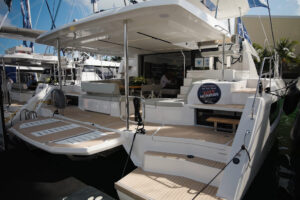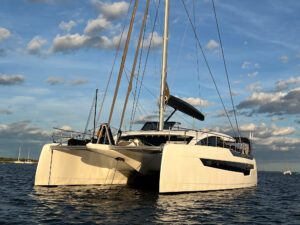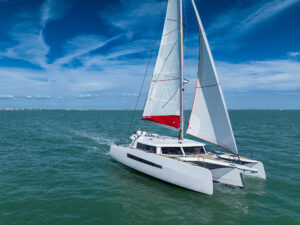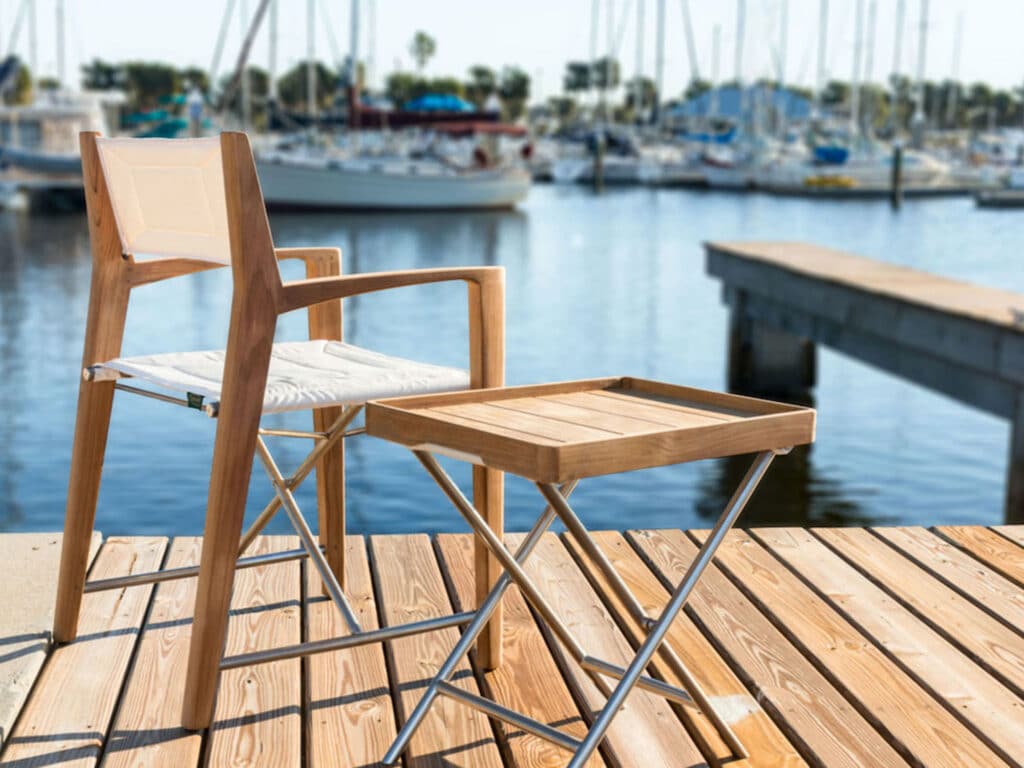
Rain, sun, hot days, cold nights, freezing temperatures, even snow and hail—yikes the elements can be hard on wood that’s left outdoors for months or years at a time by design.
We sailors know all too well the toll that the elements can take on the exterior wood that adorns our boats, which is why for centuries those who could afford it have chosen teak for its durability in topsides applications and for its natural good looks, resistance to rot, and strength when used for furniture and structural panels belowdecks.
“Teak loves water,” says Mal Haddad, vice president of Westminster Teak, a high-end furniture design and manufacturing company based in Live Oak, Florida. Haddad notes that it’s those very qualities appreciated by sailors that make teak an ideal choice for outdoor furniture at home, no matter where you live. Left with its natural finish, oil rises to the surface of the wood, its high oil content and relatively low coefficient of thermal expansion means teak can withstand large swings in temperature. In other words, it can be left outdoors year-round, even in snow-covered regions, without the wood warping, shrinking or expanding.
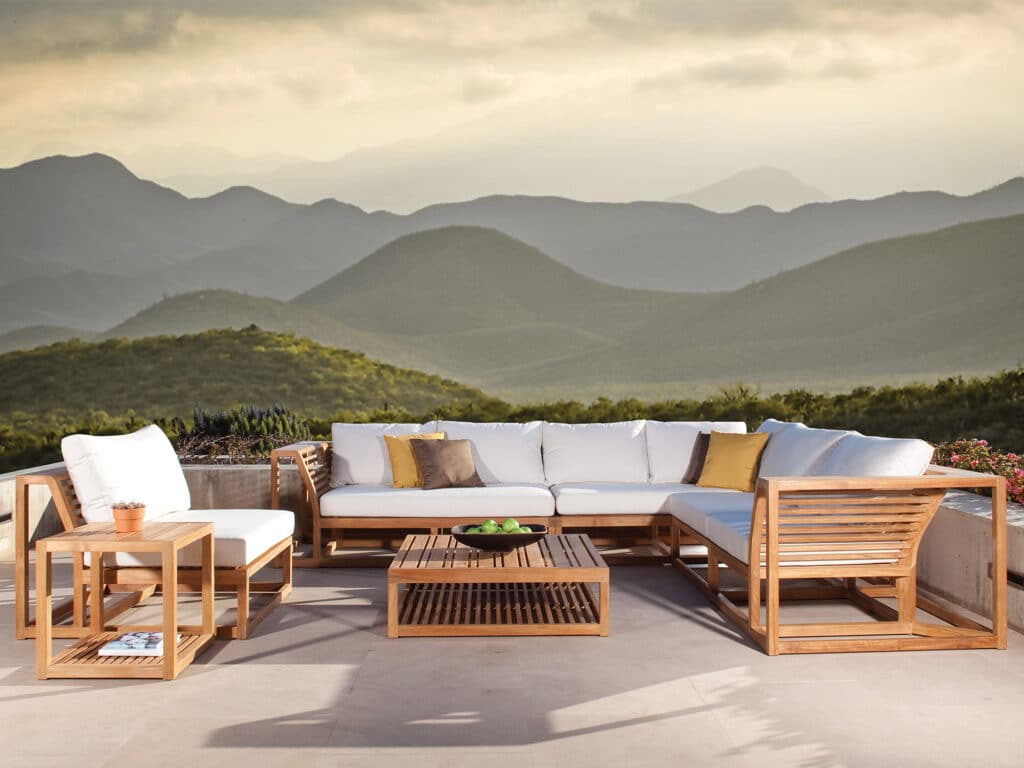
Haddad, with a background in industrial and ocean engineering, grew up in Singapore, where as a boy he was surrounded by exotic woods—especially teak—at the shipyard where his father built oceangoing tugs. After attending college here in the States, Haddad worked as a consultant to telecommunications companies and traveled extensively, but as a hobby, he began to design and build teak furniture, eventually opening a studio and gallery in Florida that was tailored to interior designers and other furniture makers. It was at the studio that he met Jim TenBroeck, who founded Westminster Teak in 1997. It took some persuasion, Haddad said, but eventually, 16 years ago, he brought his design skills to the company full time as vice president. Today, many of the designs in Westminster’s catalog are his.
And on the subject of design, Haddad is passionate. Because of teak’s longevity, furniture built from it will last years longer than pieces made from metals such as aluminum, or even plastics, he says. So, Westminster favors timeless styles that won’t fall in and out of favor, depending on the trend of the day. Several of Westminster’s designs date back to the company’s early days, and new models are introduced only after a lot of thought has gone into them.
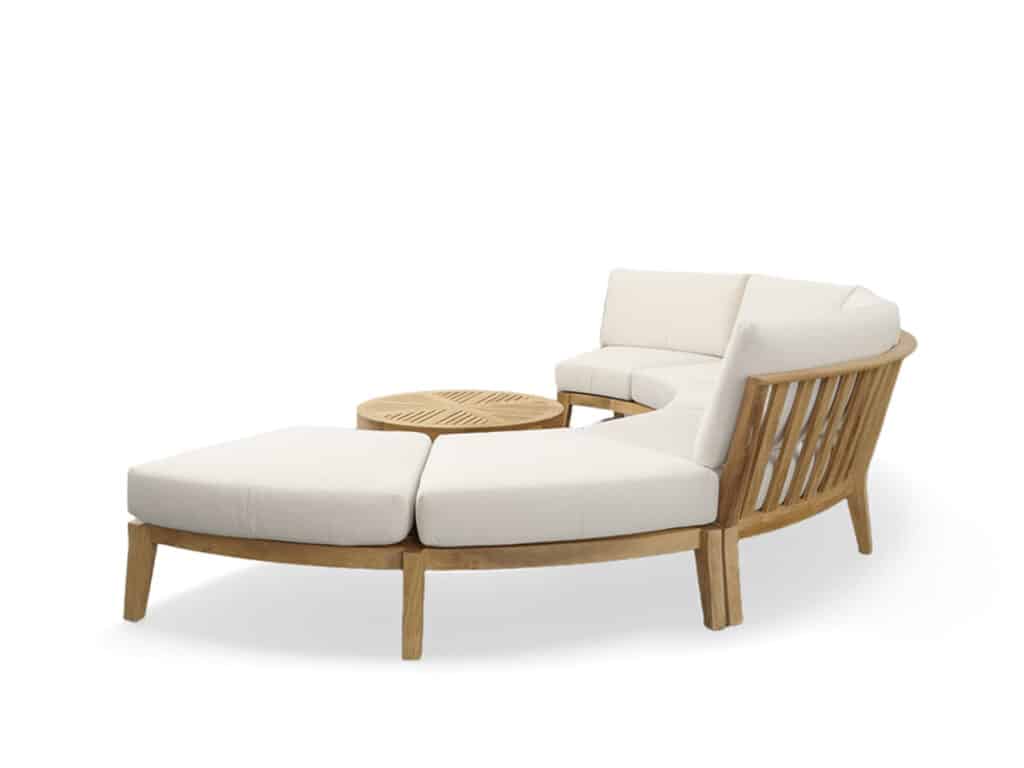
Besides having a large collection of teak furniture of his own, Haddad says that he also collects bowls—not only as art, but as utensils that he uses around the house. Comparing bowls to furniture, he says: “It is an object you live with … and love! That’s good design.”
In the marine industry, recently the trend in production-boat building has been to find teak alternatives for decks, trim and interiors. This is due in part to cost, but also because of concerns about the availability and sustainability of the wood itself.
Haddad, though, is equally passionate about the environmental benefits and sustainability of properly grown and harvested teak. From the outset, Westminster has had a strategic partnership with an Indonesian factory that was the first to join Nusa Hijau, the Indonesian chapter of the Global Forest Trade Network. All its teak comes from sustainably harvested plantations in Java, Indonesia. Those plantations are managed by the Ministry of Forestry, Perum Perhutani, and every process of the teakwood, from forest to retail floor, is monitored and certified by third party technical organizations. Sustainability, he adds, also means making sure workers both in the plantations and in the factories are treated fairly and paid a living wage.
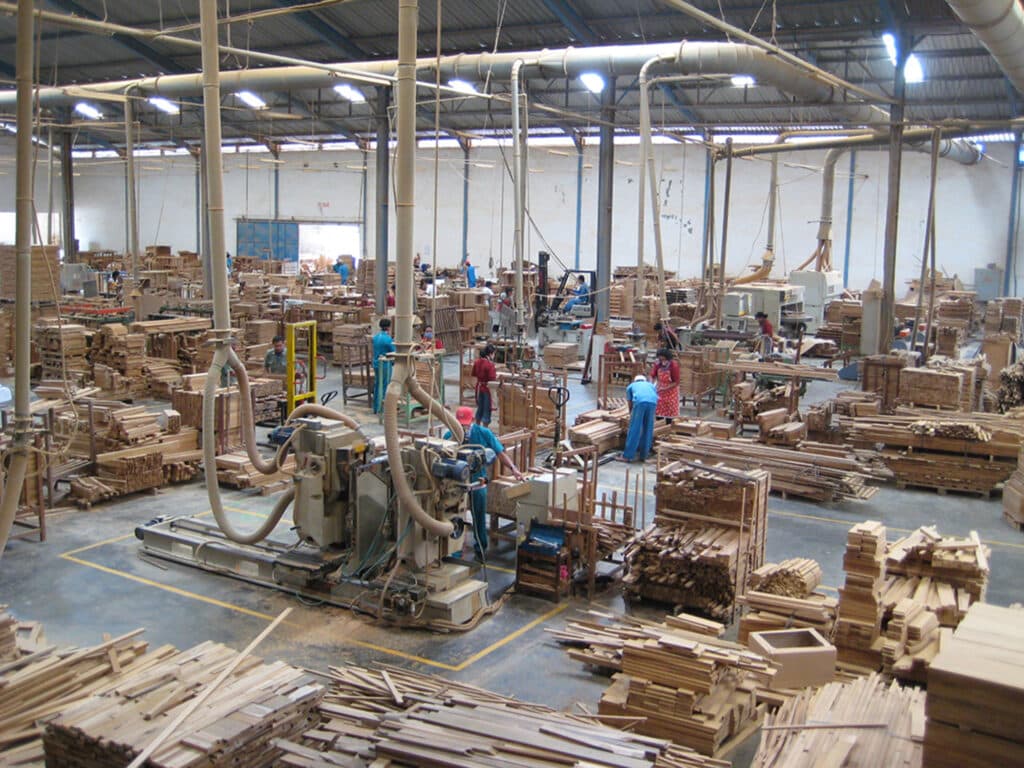
When people think of teak, Haddad says, they often think of luxury yachts and the lustrous, rich look of high-gloss varnished teak furniture and trim. That, says Haddad, is fine for wealthy owners who can afford to hire crew to cover chairs and tables when they’re not being used, or to frequently sand and revarnish rails and whatnot.
But teak, he says, will do just fine on its own if left unfinished outdoors and allowed to weather over time and develop a handsome silvery gray patina—a look that he says he prefers as it complements beautifully with the landscape of the outdoors , and often what is found aboard yachts with teak decks.
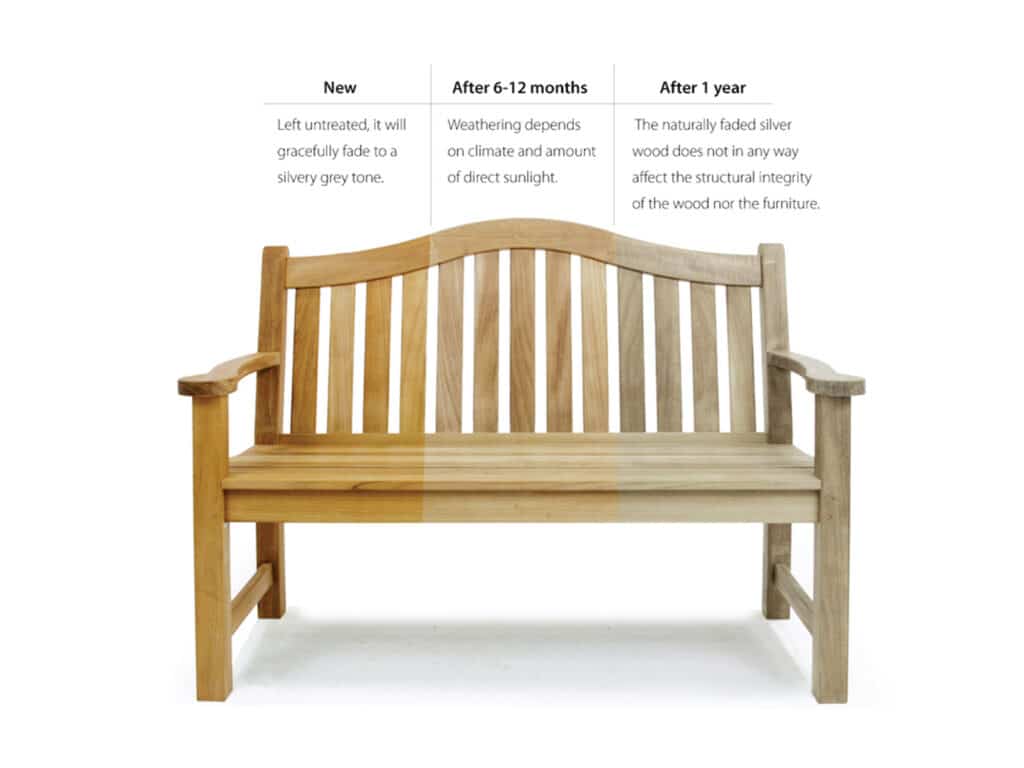
Upkeep is minimal, he says. All you need to do is wash down the teak a couple of times a year with dish soap and water, using a soft-bristle scrub brush to remove airborne dirt and the like. Don’t, he says, oil the teak for outdoor use, because moisture can find its way under the surface and cause mold or mildew that will stain the wood and difficult to remove.
His advice for a homeowner: Invest in good-quality, well-designed outdoor furniture. Sit in it and enjoy its look and feel because it will be with you for a good long time.
For more information about Westminster Teak, visit their website at westminsterteak.com.

